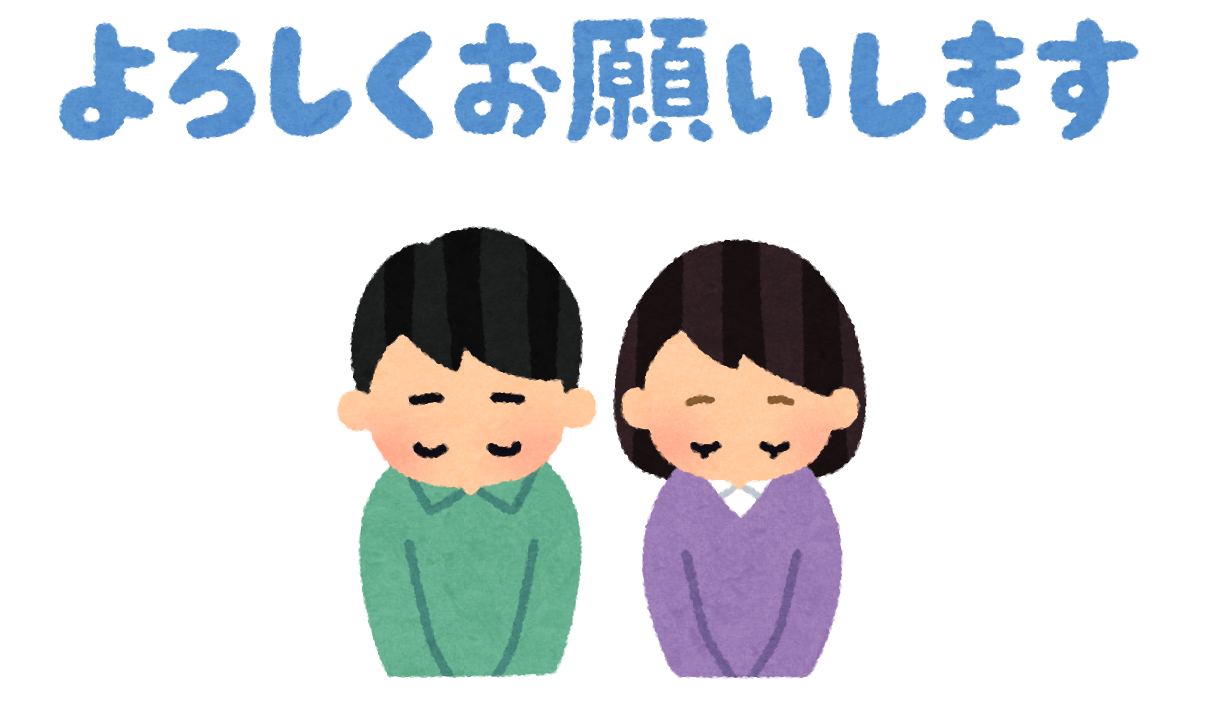
Author: Jasmine Ortlieb
In Japan, using polite language and mastering your honorifics (often referred to collectively as 敬語/keigo) is one of the keys to communication and building up your professional reputation. In fact, it can take years of studying and much trial-and-error until you can have smooth conversation and written communication in the workplace. This is true not only for foreigners but for many Japanese people as well.
Whether you’ve been working in Japan for years and want to brush up on your keigo, or are just beginning your professional journey, these practical phrases should prove to be helpful and convenient in a variety of situations when working in a Japanese company.
1. Greeting a Client: お世話になります。
お世話になります or お世話になっております is a polite way to greet someone in conversation or in an email who will be working with you in the future. You will be using these terms mostly with people who are clients or customers–in other words, those not associated with your company. You will use this term in both verbal conversations and when writing emails, etc.
In Japanese, 世話をする means to take care of or to look after–お世話になります(osewa ni narimasu) uses なる (naru: to be), as you are in the position of being taken care of by someone else, like a client or a new workplace supervisor, roughly translating as “I am in your care.”
・お世話になります。(osewa ni narimasu) usually used as a first-time greeting only
・お世話になっております。(osewa ni natteorimasu) used after a first-time greeting
・いつもお世話になっております。(itsumo osewa ni natteorimasu) used with a long-time client or customer whom you have done repeated business with.
While お世話になります is a greeting, please note that this phrase is used in business settings rather than はじめまして (hajimemashite), which is used when introducing yourself.
2. Acknowledge with your Partner’s Busy Schedule: お忙しいところすみません。
Before asking a favor or getting into the main topic of discussion, it is polite to first address and empathize with your conversation partner’s situation. If you are at work, most everyone is likely busy and has their own tasks to do, so this acknowledgment addresses this matter and makes them more receptive to listen to what you have to say afterward.
お忙しいところすみません (oisogashii tokoro sumimasen) or お忙しいところすみませんが、 (oisogaoshii tokoro sumimasen ga) are standard ways to do this, roughly translating into “I know you’re busy already…” or “I apologize for reaching out to you when you’re this busy, but…” creating a polite sentence that lets your partner know you are considering their time, too.
3. Do you Have a Minute? お時間よろしいでしょうか。
While considering your colleagues’ time is important, there are situations when you have to suddenly communicate with someone. Before you get into the main topic, though, it is polite to ask if they have a moment first, especially if they look like they are in the middle of something.
The most polite variation of this is お時間よろしいでしょうか。 (ojikan yoroshii deshouka), which should be used with a superior or a colleague you want to express respect towards (this could be someone with more experience or a longer tenure at the company than you).
In more casual situations, you can use お時間大丈夫ですか。(ojikan daijoubu desuka) which is still polite, but a little bit more direct.
You can link this phrase with #2 for: お忙しいところすみませんが、今お時間よろしいでしょうか to make a smooth transition before getting into your main topic.
4.Asking a Favor: ~ていただけますか/いただけますでしょうか。
Wondering how to politely ask your co-worker, boss, or client to do something for you? After confirming that they have the time to talk to you, using ~ていただけますか (~te itadakemasu ka) is a very professional way of making your request. You can use this phrase in conversation and writing.
Using the te-form of a verb with いただく (itadaku), the humble form of もらう (morau) is the standard way of asking someone to do something for you in a professional setting. Below are some basic examples of how to use this handy phrasing:
この点を確認していただけますか。(kono ten wo kakuninshite itadakemasu ka) Can you kindly check this point for me?
お忙しいところ恐れ入りますが、私の日本語を直していただけますでしょうか。 (oisogashii tokoro osoreirimasu ga, watashi no nihongo wo naoshite itadakemasu deshouka) I’m sorry for interrupting you when you are busy, but can you please correct my Japanese?
As shown the phrasing above, you can link ~ていただけますか with other polite phrases for more fluid conversation.
In general, there is not much difference between いただけますか and いただけますでしょうか, however, でしょうか makes the sentence longer and may be appropriate when addressing superiors and clients. You can feel free to be more direct, using shorter sentences with your closer relationships.

5. Maintaining Good Relations with よろしくお願いします and お疲れ様です
At the end of most communication in the office, you will include a よろしくお願いします (yoroshiku onegaishimasu) at the end.
This polite term is incredibly versatile: you often will use this phrase at the end of a self-introduction when first starting at your company or changing positions, as well as with clients or potential customers whom you meet with very infrequently or even only once. You will also use this after making a request, after an apology, or at the start of the day.
For communication with a client, customer, or a supervisor, you can use よろしくお願いいたします (yoroshiku onegaiitashimasu), which contains the humble form of お願いします.
A couple of other variants include:
・どうぞよろしくお願いします/お願いいたします。(dozo yoroshiku onegaishimasu) – used in conversation or writing
・何卒よろしくお願いいたします。(nanitozo yoroshiku onegaiitashimasu) – used in writing
Another greeting especially prevalent in the workplace is お疲れさまです or お疲れさまでした (otsukare sama desu/otsukare sama deshita), which is often translated directly as “Thank you for your hard work.”
Although its usage depends on the work environment, it can be used between colleagues, and sometimes even becomes a default greeting to your co-workers even during the middle of the day, in place of “good morning” and “good afternoon.”
Additionally, before leaving the office for the day, many people will address the room, announcing お疲れ様です.
More Tips on Using Business Japanese:
In general, when using polite, honorifics, and humble language in Japanese, it’s vital to first understand the hierarchy of your company or professional situation. As mentioned above, understanding 敬語 in Japanese is difficult even for native speakers, and usually requires someone years of experience and practice to master.
You use honorific (尊敬語 sonkeigo) language when addressing a superior, client, or someone older/more experienced than yourself. This will allow you to determine when you must use いただけますか or when もらえますか will suffice, and if you should use よろしくお願いいたします or よろしくお願いします.
When talking about yourself or your company (including superiors) to a client or third-party, you will use humble language (謙遜後 kensongo), which requires mastering another set of special words and verbs.
Also, keep in mind that the phrases and patterns introduced above are just a fraction of the different kinds of honorific and humble language in Japanese.
While communication in Japan can be incredible complex, choosing your words appropriately and information flow in the work place is vital—you can read more about the important value of communication in Japanese companies in this article.
Remember, it isn’t what you say but how you say it: keeping communicative will keep you efficient and help your reputation, too!















